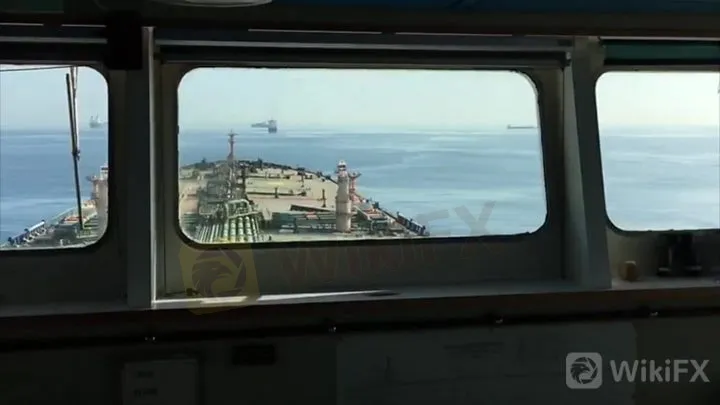简体中文
繁體中文
English
Pусский
日本語
ภาษาไทย
Tiếng Việt
Bahasa Indonesia
Español
हिन्दी
Filippiiniläinen
Français
Deutsch
Português
Türkçe
한국어
العربية
Iranian tanker row: Oil 'sold' in defiance of US threats
Abstract:Image copyrightReutersImage caption Iran had promised a court the tanker would not sail to SyriaA ta
Image copyrightReutersImage caption
Iran had promised a court the tanker would not sail to Syria
A tanker suspected of trying to deliver Iranian oil to Syria in defiance of international sanctions has now sold its cargo, Iran says.
Satellite images appeared to show the vessel, the Adrian Darya-1, off the coast of Syria on Friday.
But an Iranian foreign ministry spokesman would only say the ship had delivered its cargo after docking “on the Mediterranean coast”.
The ship has been at the centre of a US-Iran diplomatic tussle.
It was seized by British marines off Gibraltar in July and held there until 15 August when Iran gave assurances it would not sail to Syria.
The US vowed on Sunday to impose sanctions on any buyer of the oil.
“We will continue to put pressure on Iran and as President (Trump) said there will be no waivers of any kind for Iran's oil,” US Treasury official Sigal Mandelker told Reuters.
Separately, a British-flagged tanker seized by Iran in what many saw as a retaliatory move was being prepared for release, Iran's foreign ministry said.
The Stena Impero was going through the final legal processes and would be released “soon”, spokesman Abbas Mousavi said.
Iran nuclear crisis in 300 words
US offered millions to Iranian tanker captain
Iran, tankers and the Gulf crisis explained
The ship has been held since 19 July, for allegedly breaching maritime law - and Iran has consistently denied its seizure had any link to the detention of the Iranian tanker.
Satellite imaging company Maxar released photographs which is said showed the Adrian Darya about two nautical miles off the Syrian port of Tartus on Friday.
The tanker was carrying 2.1 million barrels of Iranian crude oil.
How did the row start?
The ship, originally known as Grace 1 when it was detained in July off Gibraltar, a British territory, has been a further cause of tension between Washington and Tehran.
British marines had helped Gibraltar authorities detain the vessel, partly drawing the UK into the row.
The United States made an official request to seize the ship in August, but the courts in Gibraltar denied it.

Media playback is unsupported on your device
Media captionGrace 1: Inside the seized supertanker
The tanker's fate was complicated by the different approaches from American and European leaders to Iran.
The US last year withdrew from the international 2015 deal to limit Iran's nuclear programme, and reinstated sanctions. In response, Iran stopped abiding by some commitments in the deal.
The EU has sought to salvage the accord. The Iranian tanker was seized because it was suspected of heading to Syria in breach of EU sanctions.
Authorities in Gibraltar released the vessel on 15 August after receiving assurances from Iran that it would not discharge its cargo in Syria.
What has the US done in response?
The US has been trying to seize the tanker since it was released by Gibraltar.
It issued a warrant and blacklisted the vessel, threatening sanctions on any country which offered it aid. The ship has since been sailing east across the Mediterranean.
Earlier this week it was revealed that a US official had even offered the captain of the ship millions of dollars to change course and sail the tanker to somewhere the US might be able to seize it.
Following the emergence of the satellite images on Saturday, the UK's Foreign Office called the reports of the ship's presence near Syria “deeply troubling”.
Disclaimer:
The views in this article only represent the author's personal views, and do not constitute investment advice on this platform. This platform does not guarantee the accuracy, completeness and timeliness of the information in the article, and will not be liable for any loss caused by the use of or reliance on the information in the article.
WikiFX Broker
Latest News
CFI Partners with MI Cape Town, Cricket Team
Doo Financial Expands Reach with Indonesian Regulatory Licenses
Volkswagen agrees deal to avoid Germany plant closures
Geopolitical Events: What They Are & Their Impact?
Webull Canada Expands Options Trading to TFSAs and RRSPs
CySEC Launches Redesigned Website Packed with New Features
WikiEXPO Global Expert Interview: Simone Martin—— Exploring Financial Regulation Change
TradingView Launches Liquidity Analysis Tool DEX Screener
MultiBank Group Wins Big at Traders Fair Hong Kong 2024
WikiFX Review: Is PU Prime a decent broker?
Currency Calculator


